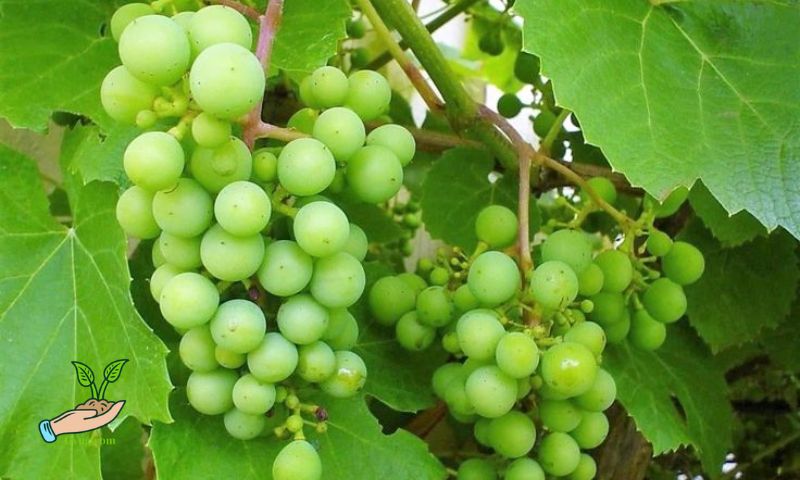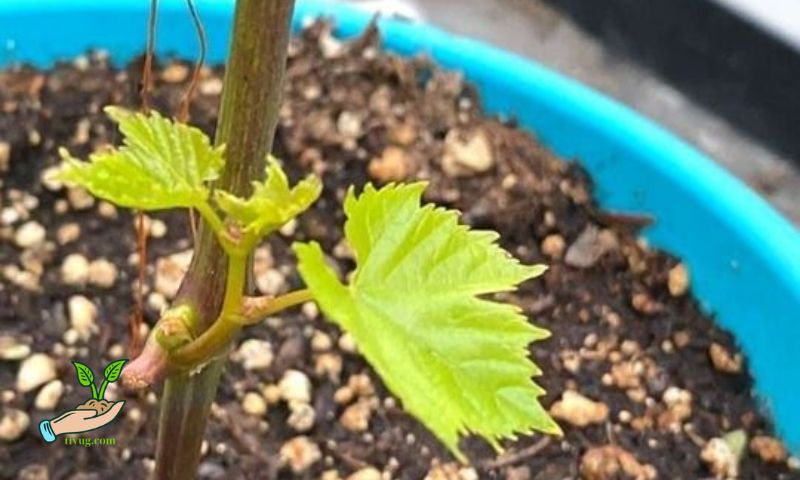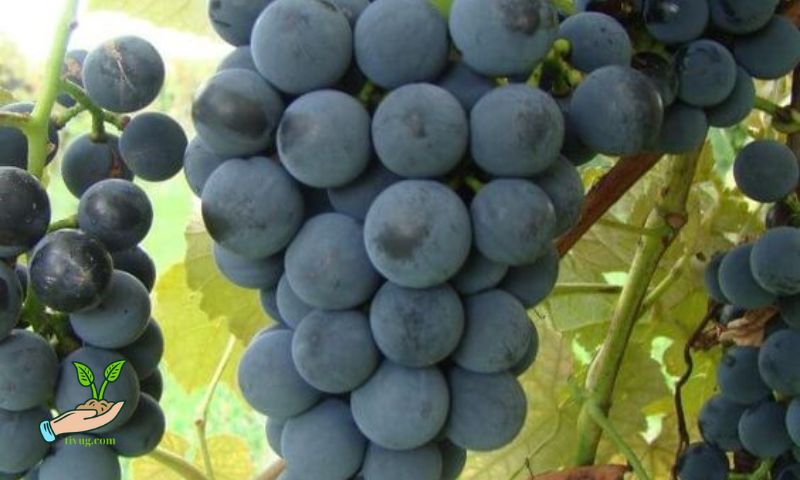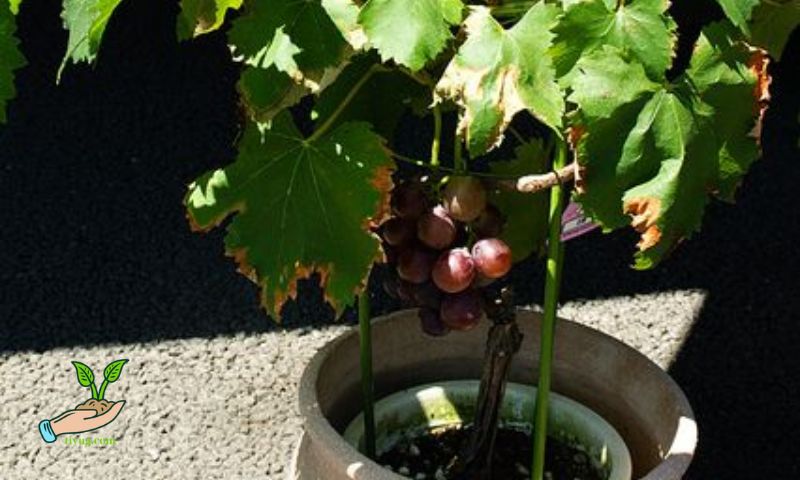Growing grapes in pots is an excellent way to enjoy fresh grapes even if you lack garden space. This method of cultivation offers numerous benefits, such as mobility, easier pest control, and the ability to create a microclimate that suits the grape variety. Whether you’re a seasoned gardener or a beginner, growing grapes in pots can be a rewarding and fruitful experience. In this guide, we will cover everything you need to know about successfully growing grapes in containers.
Section 1: Choosing the Right Grape Variety

The first step in growing grapes in pots is selecting the appropriate grape variety. Not all grapevines are suited for container gardening, so it’s crucial to choose a variety that thrives in confined spaces. Some of the best grape varieties for growing grapes in pots include:
- Concord: Known for its sweet flavor and versatility, Concord grapes are a popular choice for container gardening.
- Thompson Seedless: This variety is excellent for fresh eating and making raisins, and it adapts well to pot cultivation.
- Pinot Noir: Ideal for wine enthusiasts, Pinot Noir grapes can be grown in pots with the right care.
When selecting a grape variety, consider your local climate and the space available. Some varieties require more sunlight and warmer temperatures, while others can tolerate cooler conditions. By choosing the right variety, you can ensure a bountiful harvest and healthy plants.
Section 2: Selecting the Right Pot and Soil
Choosing the right pot is crucial for the success of your grapevines. The ideal pot should provide adequate space for root growth and proper drainage. Here are some tips for selecting the right pot for growing grapes in pots:
- Size: A pot with a diameter of at least 18-24 inches and a depth of 24-36 inches is recommended. This size allows ample space for the roots to expand.
- Material: Choose a pot made of durable materials such as plastic, clay, or wood. Ensure the pot has drainage holes to prevent waterlogging.
- Mobility: Consider using pots with wheels or placing them on a movable platform to easily adjust their position for optimal sunlight.
The soil mix is equally important. Grapevines prefer well-draining soil rich in organic matter. A recommended soil mix for growing grapes in pots includes:
- 1 part garden soil
- 1 part compost
- 1 part perlite or sand
This combination ensures proper drainage and provides essential nutrients for healthy growth.
Section 3: Planting Grapevines in Pots

Once you have the right pot and soil, it’s time to plant your grapevines. Follow these steps to ensure successful planting:
- Prepare the Pot: Fill the pot with the prepared soil mix, leaving a few inches from the top.
- Plant the Vine: Dig a hole in the center of the pot and place the grapevine’s root ball into the hole. Ensure the vine is planted at the same depth as it was in its nursery container.
- Fill and Water: Fill the hole with soil and gently firm it around the base of the vine. Water the plant thoroughly to help settle the soil.
When transplanting young vines, handle them with care to avoid damaging the roots. Ensure the vine is positioned upright and supported by a trellis or stake if needed.
Section 4: Caring for Potted Grapevines
Caring for potted grapevines involves regular watering, fertilization, and pruning. Here are some essential tips for maintaining healthy grapevines:
- Watering: Grapevines in pots require consistent moisture, especially during the growing season. Water deeply once or twice a week, allowing the top inch of soil to dry out between waterings.
- Fertilization: Feed your grapevines with a balanced fertilizer every 4-6 weeks during the growing season. Organic options such as compost tea or fish emulsion are excellent choices.
- Pruning and Training: Regular pruning helps maintain the vine’s shape and promotes healthy growth. Train the vine along a trellis or stake to ensure proper air circulation and sunlight exposure.
By following these care tips, you can ensure your potted grapevines remain healthy and productive throughout the growing season.
Section 5: Managing Pests and Diseases

Pests and diseases can affect potted grapevines just as they do those planted in the ground. Common issues include aphids, spider mites, and powdery mildew. Here are some strategies for managing pests and diseases in potted grapevines:
- Inspection: Regularly inspect your grapevines for signs of pests or disease. Early detection allows for prompt treatment.
- Organic Controls: Use organic methods such as neem oil, insecticidal soap, or horticultural oil to control pests. These treatments are safe for the environment and effective against many common pests.
- Preventative Measures: Keep the area around your pots clean and free of debris. Proper spacing and pruning help improve air circulation, reducing the risk of fungal diseases.
By staying vigilant and using organic control methods, you can keep your potted grapevines healthy and free from pests and diseases.
Section 6: Harvesting and Using Grapes
Harvesting grapes from pots requires patience and careful timing. Here are some tips for harvesting and using your homegrown grapes:
- Signs of Ripeness: Grapes are ready to harvest when they reach their full color and develop a sweet flavor. Test a few grapes to ensure they are ripe before harvesting the entire bunch.
- Harvesting: Use sharp scissors or pruning shears to cut the grape clusters from the vine. Handle the grapes gently to avoid bruising.
- Storing and Using: Store harvested grapes in the refrigerator for up to two weeks. They can be enjoyed fresh, used in recipes, or preserved by making jams, jellies, or wine.
Harvesting grapes from pots can be a rewarding experience, providing you with delicious, homegrown fruit.
Conclusion
Growing grapes in pots offers numerous benefits and can be a fulfilling gardening endeavor. With the right variety, pot, soil, and care, you can enjoy a bountiful harvest of fresh grapes even in limited spaces. Whether you’re growing grapes for fresh eating, making wine, or simply for the joy of gardening, this guide provides the essential steps for success. Start your container grape garden today and experience the satisfaction of growing grapes in pots.

